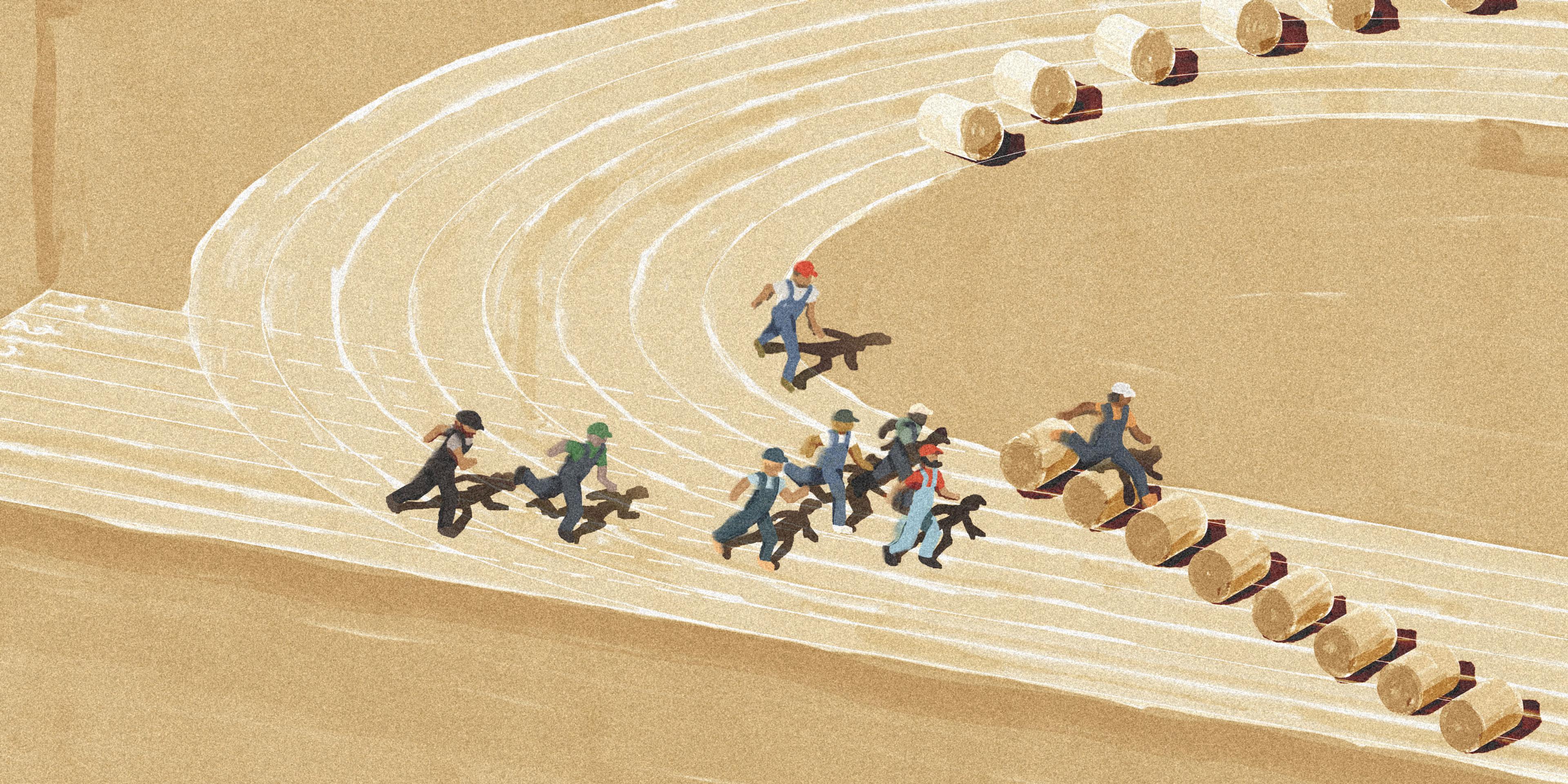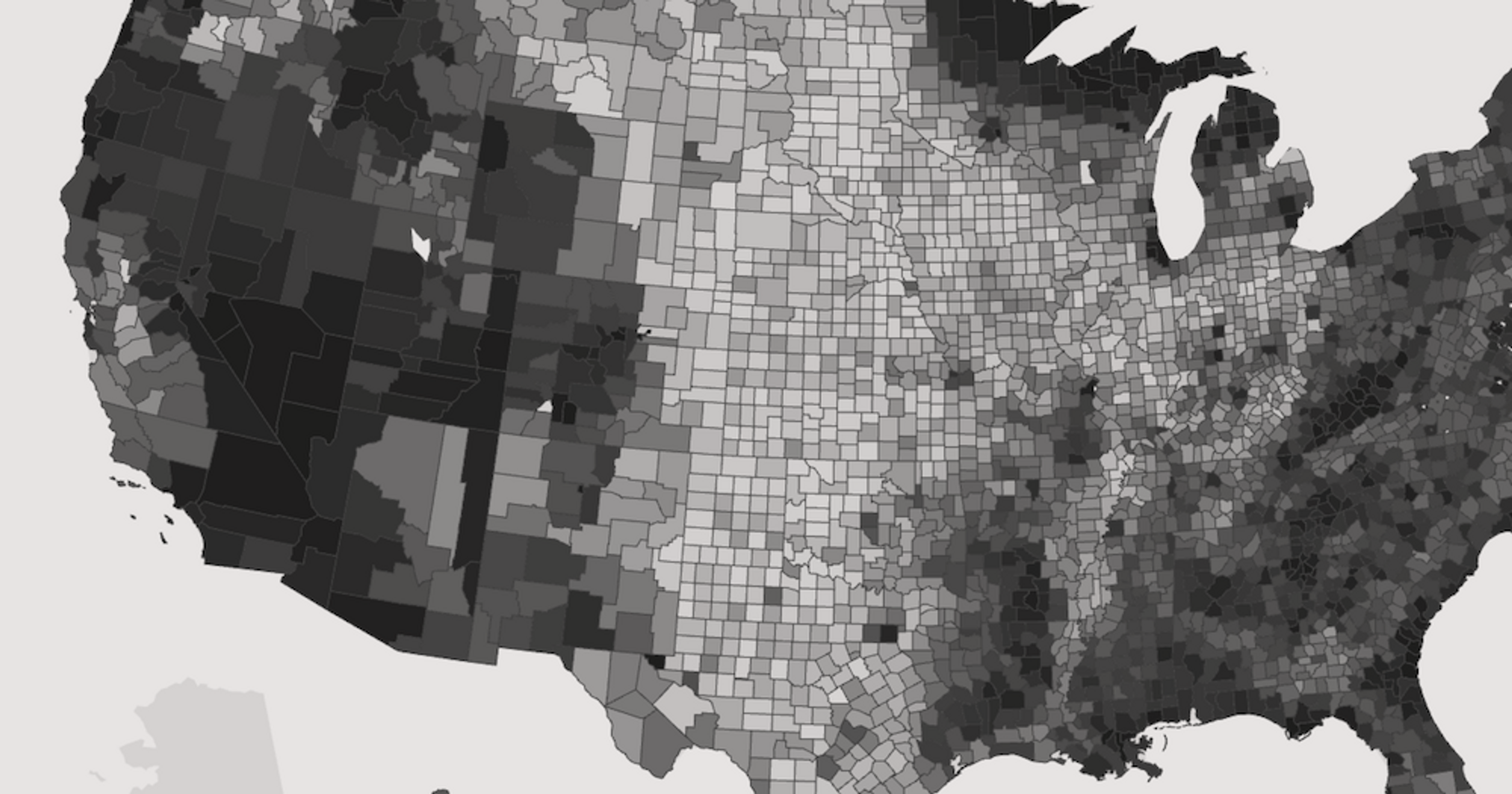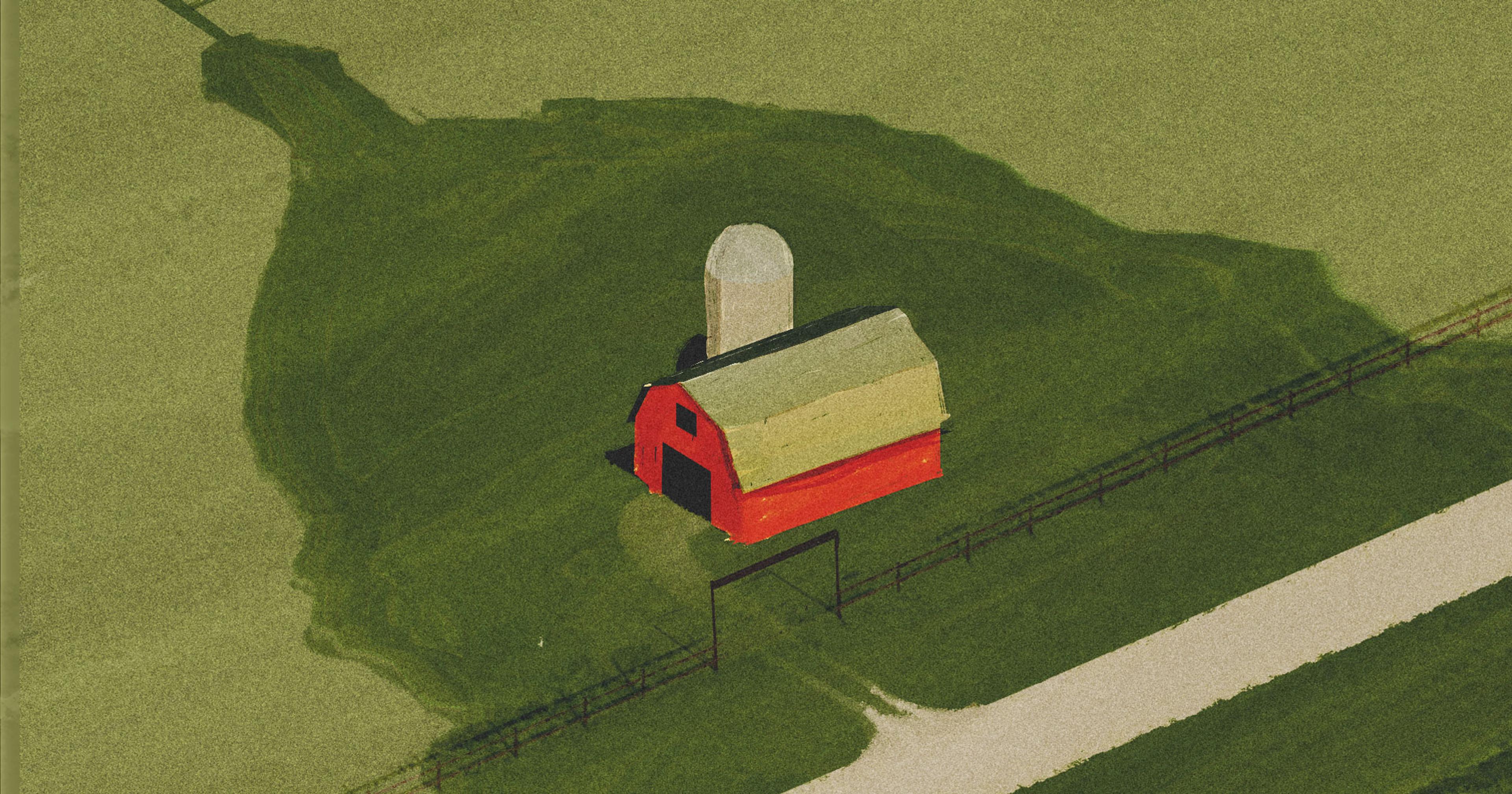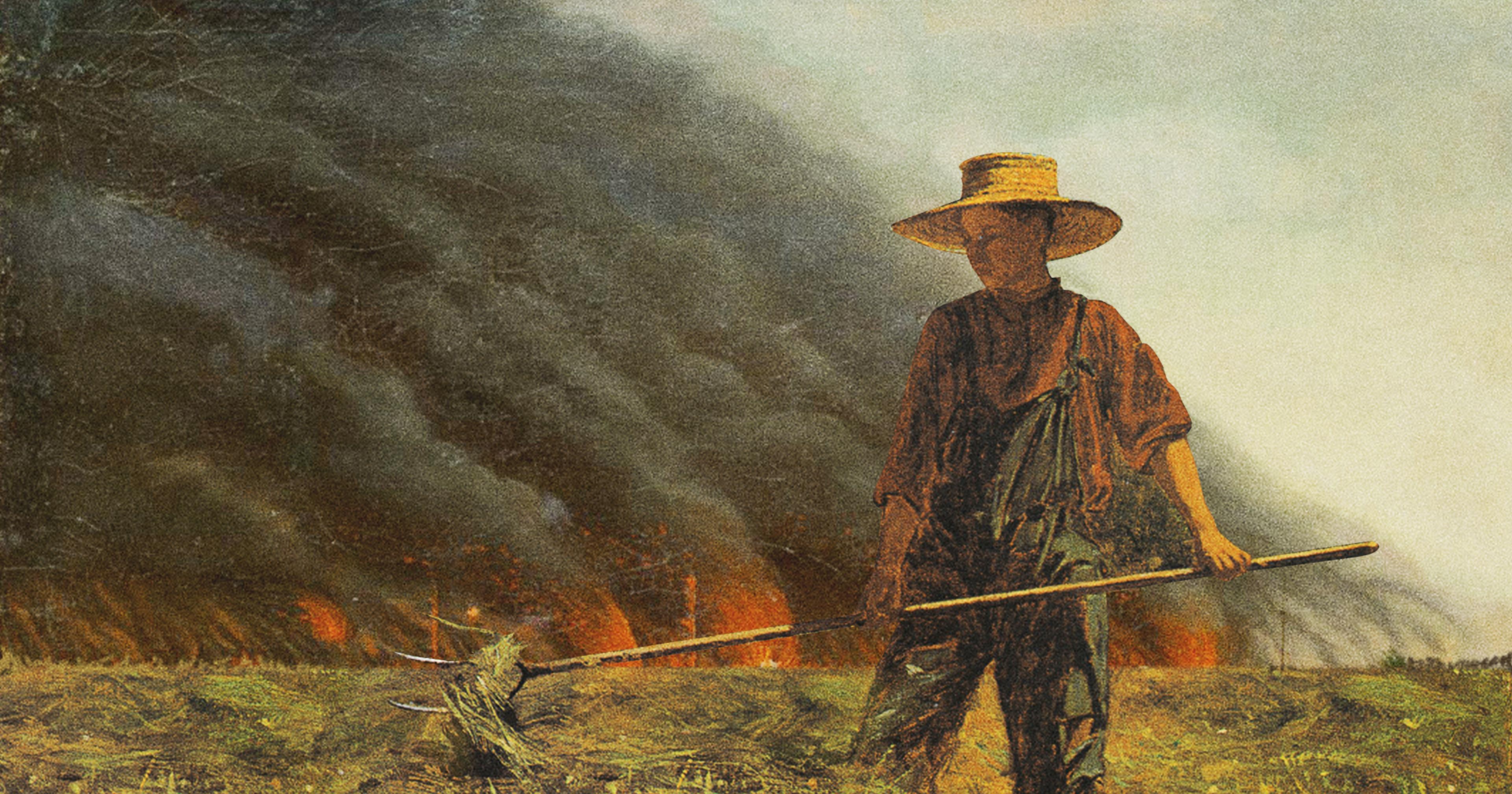At the annual Farm Olympics, young farmers in Tennessee discuss all the hurdles to acquiring their own property.
Jess Wilson stood on a picnic table bench and welcomed a crowd to the Southeast Tennessee Young Farmers’ (SETNYF) third annual Farm Olympics. These farmers and their families had gathered at a park about a 30-minute drive north of Chattanooga, Tennessee, for good-natured competition. Participants would test their professional skills including a plant identification quiz and a fencing contest (not the Olympic kind). In the latter, teams of two would need to take down temporary fencing, carry it to a different area, and set it back up. The fastest pair would win.
As the competitors stretched before the events, Wilson, SETNYF president, explained the organization and the plan for the afternoon. Wilson’s group is a chapter of the National Young Farmers Coalition, a 15-year-old organization advocating for young and minority farmers. Shifting from the practical to the existential, Wilson highlighted the obstacles facing aspiring farmers.
“It is nearly impossible to be a young farmer because it’s so expensive to enter into agriculture,” she said. “The biggest barrier is land access.”
One of the planned Olympic events was based on this issue: The Obstacles to Land Access Race. Competitors would have to climb over rows of temporary fencing, scramble under or over giant wooden spools, and run around barrels in their race to the finish line. In past years, signs were placed next to each obstacle indicating which challenge they represented, including high land prices, student loan debt, and housing. This race was obviously a light-hearted game, but plenty of participants had struggled through the real thing.
Every five years, the U.S. Department of Agriculture National Agricultural Statistics Service (USDA NASS) releases a Census of Agriculture. In its most recent census from 2022, it found that the average age of American producers, defined as participants in farm decisions, was 58.1 years old, a number that had been increasing over the past 20 years. NASS also found that young producers (under 35 years old) comprised only 8.8 percent of all producers in our nation. And about 80 percent of those young producers were considered beginning farmers as they had been farming for no more than a decade.
Ernie and Janet Mathes did not have farming experience when they decided to enter the profession a few years ago. The Atlanta residents, now aged 39 and 36 respectively, began to improve their diet. They started with a small garden and backyard chickens but eventually sold their Georgia home and traveled America in an RV searching for the perfect place for their own homestead. “And then we figured, if we got enough property, why not supply [others with] the same food that we want?” Ernie said. “There’s other people looking for it.”
The Matheses’ search for property mirrors that of so many other young farmers struggling to break into the industry. “The longer we’re looking, the harder it was getting to find things,” recalled Ernie. They couldn’t compete with developers buying farmland, and they also couldn’t get a loan to buy land on which they could build a house. Eventually, they were fortunate to find an overgrown former cattle farm in Georgia whose owner, a widow, could no longer care for it.
Most new farmers are on their own when it comes to finding land. According to American Farmland Trust (AFT), an organization working to preserve farmland, most farmers no longer inherit their farms from family. But “land is becoming so expensive that you can’t pencil out a profit,” said Charles Martinez, an agricultural economist and director of the University of Tennessee’s Center of Farm Management. “So if you can’t pencil out a profit from the get-go because of the price of land, then you probably shouldn’t enter that business.”
“It is nearly impossible to be a young farmer because it’s so expensive to enter into agriculture. The biggest barrier is land access.”
According to the USDA’s Economic Research Service (ERS), the value of American farm real estate, defined as land and the structures on it, has surged since the mid-20th century. After accounting for inflation, ERS reports that the average value of one acre of that real estate has risen from almost $750 in 1950 to $4,170 in 2024. The average value for one acre this year is $4,350 according to NASS. Although this growth has been flagging since 2021, the American Farm Bureau Federation notes that the 2025 value is a record and the fifth consecutive year of increase.
To explain farmland’s high price tag, Martinez points to basic economic principles. Low supply increases prices, which is amplified by increased demand for land which also increases price. Young farmers often can’t compete with wealthier established enterprises for this finite resource, such as other farmers buying land to consolidate into larger operations. If they’ve been working on others’ farms to gain experience, it’s unlikely they’ve earned much, and high interest rates can prevent them from obtaining loans. And “if you have student loan debt, forget it,” said Wilson.
While leasing land is an alternative to buying, it doesn’t provide as much stability since leases can be broken or not renewed. Even the park where the Farm Olympics was held demonstrates this instability. Once a working farm, Hamilton County purchased McDonald Farm a few years ago and uses some of it as a public park. (A farmer also leases hundreds of acres on this site to grow corn.) The property’s future is uncertain as some want to use it for industry instead; for now, a decision on its fate has been postponed.
The cost of land is not limited to its price tag, of course. If it doesn’t already have a house, purchasers must plan for housing costs. They must also consider the cost of any infrastructure such as fencing that they need to build. If they recently bought the land, they should also take their unfamiliarity with it into account.
In 2023, the Matheses opened Iron Root Pastures, 225 acres on which they raise chickens, cows, and pigs. Ernie Mathes recalls that when his family first moved onto their farm and had to build their own infrastructure, they had to learn their area’s weather patterns. For example, because they are in a valley, their farm is subject to strong winds from storms; initially, this wind damaged a couple of their chicken tractors, or mobile pens. If a young farmer buys land but can’t pay for these initial costs, their farming career might remain stalled.
“If you can’t pencil out a profit from the get-go because of the price of land, then you probably shouldn’t enter that business.”
Like the Matheses, beginning farmers must also compete with affluent buyers who plan to use the land for something other than agriculture, such as development companies intending to build neighborhoods. In 2020, the AFT issued a report on America’s farmland entitled “Farms Under Threat: The State of the States.” It found that 11 million agricultural acres were transitioned, or converted, to urban and residential land from 2001 to 2016. This is the same amount of land that our country needed in 2017 to grow vegetables, nuts, and fruit.
In the first episode of Offrange’s podcast The Only Thing That Lasts, Sarah Mock interviewed AFT leaders about these statistics and learned that the lost 11 million acres represented roughly one percent of U.S. agricultural land. While that doesn’t seem like much, the reason losing such a small percentage of land can affect farmers so intensely is location. “If you look at it from a sky eye view,” said Martinez, “it might not seem like there’s much of an issue, but if you zoom in in certain areas, then you have issues.”
Tennessee is one of those areas. The AFT’s 2020 report listed the 12 states whose farmland was most at risk. Tennessee initially ranked fourth but was moved two years later to third. Because of this report, the Tennessee Department of Agriculture asked Martinez to conduct his own study.
By using USDA data based on satellite imaging and parcel data, or property assessment records, from each of the state’s 95 counties, Martinez tracked changes in every parcel in Tennessee. He concluded that the amount of the state’s farmland converted each year from 2017 to 2024 is roughly double what the AFT calculated. From 1997 to 2017, about 1.5 million agricultural acres were converted. He estimates that by 2027, Tennessee’s total lost farmland will reach about 2 million acres.
Conversion can have many causes, and the factors that have led to conversion in Tennessee can also be found across the nation. These include an area’s development driven by population growth. For instance, Middle Tennessee, home to the state capital of Nashville, had the highest rate of conversion in the state. This was due to residential development. Other causes include difficulties such as lack of planning, in transferring land to new owners, and farmers selling back their land to repay loans. Depending on location, extreme weather and disease can also lead to conversion.
“The longer we’re looking, the harder it was getting to find things.”
Tennessee’s experience matches that of its region. When AFT identified the states with the most threatened land and also the fewest land policies, a group the organization considered most troubling, it came up with a list of 11 states. Nine of them, including Tennessee, were in the South. According to the AFT, this region is “clearly a hotspot for agricultural land conversion.” And once converted to non-agricultural uses, it’s almost certain this land will never again be farmed since fixtures like concrete would have to be removed and the soil will have changed.
Some factors explain this regional trend of threatened land. One consideration is size. One hundred acres converted in Tennessee will have more of an effect on agriculture than 100 acres converted in a more expansive state such as California. Also, other areas have more land use policies addressing agricultural threats than the South. Martinez agrees with the AFT that one reason other states have more of these policies is because they have had to address the effects of development for a longer period of time. He also notes that those areas, especially on the coast, have natural resources like the ocean that inspired more conservation policies which benefited their agricultural sectors.
Martinez expects the struggle for land access to continue. “It’s not as simple as, ‘This is the first time we’ve seen this.’ It’s always been around,” he said. “It’s just it comes in different forms, generation to generation.” Not even a future significant transfer of farmland due to aging owners — the AFT estimates more than 350 million acres — changes his prediction. Land access obstacles will still be present. And if those owners need to fund their retirements with the sale of their land, they will need the highest price they can get moving it beyond the reach of young farmers.
In the meantime, Ernie Mathes has advice for the next generation of farmers facing these challenges: Don’t get bogged down in research. “Make something small and just start,” he said. “See if you enjoy doing it before you either saddle yourself with debt or do something that’s overwhelming that wears you out.”










